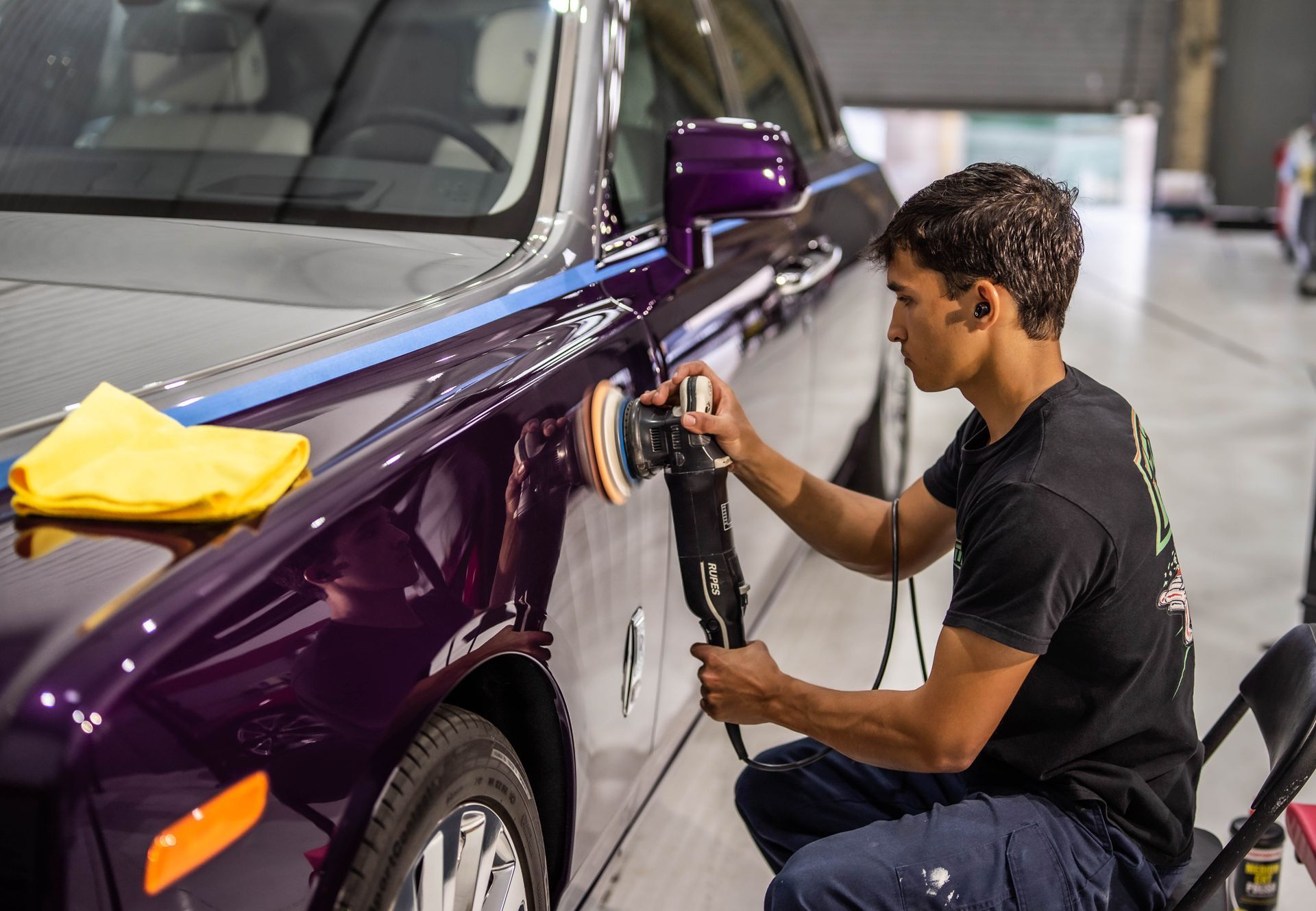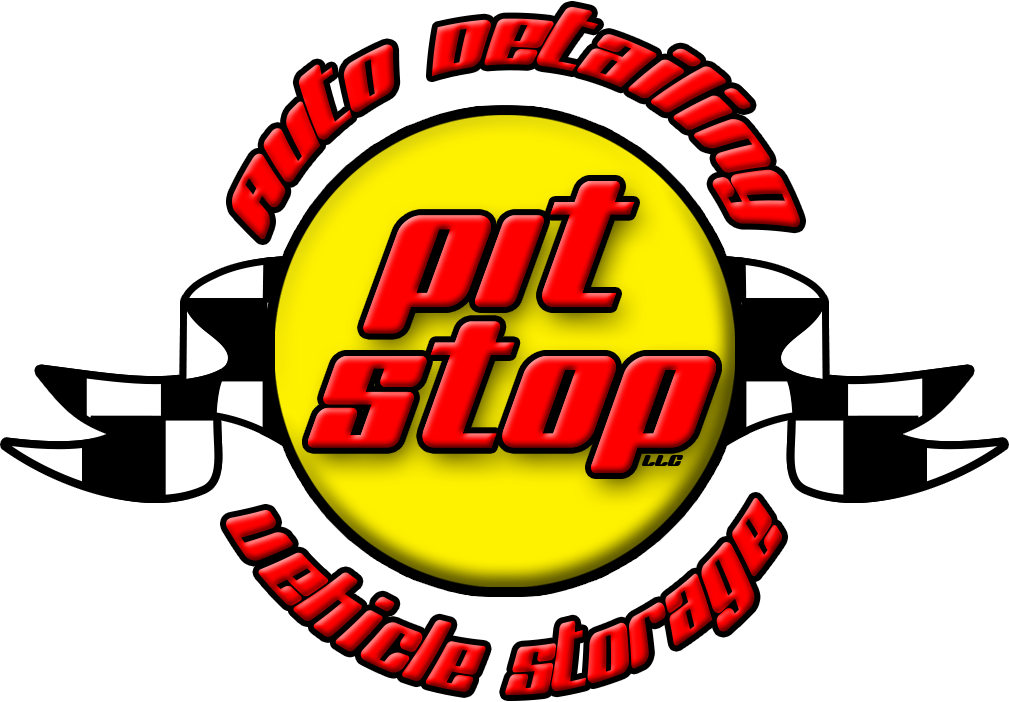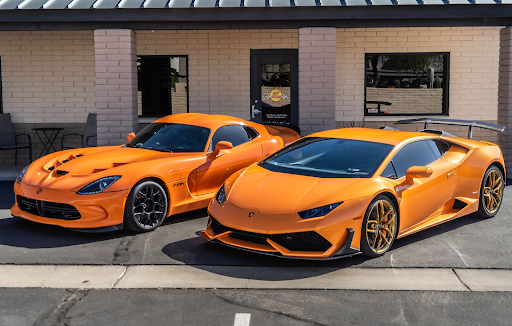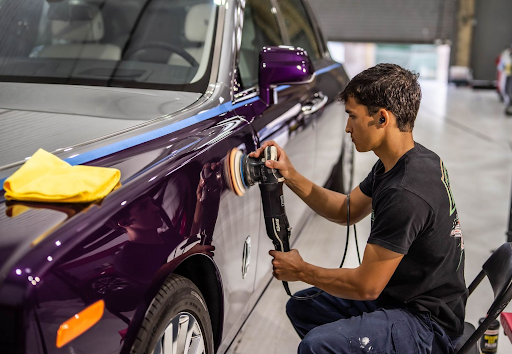Ceramic Coating vs. Wax: Why Long-Term Protection Wins
GET A FREE ESTIMATEMaintaining a car's paint becomes a constant battle when faced with intense environmental conditions. The relentless Arizona sun can quickly degrade your vehicle's finish, leaving it looking dull and damaged. While both ceramic coating and traditional wax offer solutions for paint protection, one clearly provides superior long-term defense, particularly in harsh climates like Scottsdale where extreme heat and UV exposure accelerate paint deterioration.
In this article, we'll compare ceramic coating and wax, examining what they are, how they differ, and why long-term protection matters most in challenging environments.

Understanding the Basics: What Are Ceramic Coating and Wax?
Traditional Car Wax Defined
Car wax consists of natural carnauba or synthetic polymers that form a thin protective layer on your vehicle's surface. This layer sits on top of the clear coat rather than bonding with it. Wax adds shine and repels water but offers limited protection. The typical lifespan ranges from a few weeks to about 3 months, with significant deterioration occurring faster in high-heat, high-UV environments.
Ceramic Coating Explained
Ceramic coating is a liquid polymer containing silicon dioxide (SiO2) that forms a semi-permanent bond with your car's paint. Unlike wax, it doesn't simply sit on the surface—it creates a chemical bond that integrates with the clear coat. This results in a durable, long-lasting, highly hydrophobic shield. Properly applied ceramic coatings last 2-5 years or more, even in challenging climates.
Head-to-Head Comparison: Ceramic Coating vs. Wax
Durability and Longevity
The most significant difference between these products is their lifespan. Ceramic coatings measure their protection in years, while wax measures in months. The reason lies in their molecular structure—ceramic's chemical bond creates resilience against environmental factors, while wax begins breaking down upon first exposure to the elements.
In Scottsdale's intense climate, this difference becomes even more dramatic. The powerful UV rays and high temperatures that define Arizona weather can reduce a wax coating's effectiveness by 50% within just weeks, requiring frequent reapplication to maintain even basic protection.
Protection Against Environmental Hazards
Ceramic coating offers superior resistance against:
- UV rays that cause oxidation and fading
- Chemical stains from bird droppings and tree sap
- Acid rain damage
- Blemishes and swirl marks
Wax provides only basic defense against moisture and dirt with light UV protection. When exposed to the 100°+ temperatures common in Arizona summers, wax softens and degrades rapidly, leaving your paint vulnerable during the most damaging conditions of the year.
Hydrophobic Properties and Ease of Cleaning
The hydrophobic nature of ceramic coating creates exceptional water beading that makes regular cleaning easier and reduces water spots. This self-cleaning effect means less frequent washing and protection that doesn't wash away with each cleaning.
While wax offers moderate water repellency initially, this property diminishes quickly with exposure. In a climate where dust storms and monsoon rains alternate, the superior hydrophobic qualities of ceramic coating translate to less maintenance and better protection.
Aesthetic Differences and Maintenance
Ceramic coating produces a high-gloss, mirror-like finish that enhances your car's appearance. Once applied, it requires minimal upkeep beyond regular washing.
Wax creates a warm, rich glow that many car enthusiasts appreciate. However, this aesthetic benefit comes with the trade-off of requiring frequent reapplication, especially in harsh climates where the breakdown occurs faster.
Application and Cost Considerations
Application Process
Wax application is relatively straightforward. After washing and drying, you apply a thin layer, let it dry, and buff it off. Many car owners handle this process themselves.
Ceramic coating requires meticulous preparation—washing, clay bar treatment, polishing, and IPA wipe to remove any residues. Professional application often yields the best results due to the precision required and specialized equipment used. Both products should be applied in cool, dry, shaded conditions.
Cost-Effectiveness Over Time
The initial cost difference is substantial—wax is affordable, while ceramic coating represents a significant investment. However, analyzing long-term value tells a different story.
Over a 5-year period in an Arizona climate, wax might require up to 20 applications, plus the time investment of frequent reapplication. Ceramic coating's higher one-time cost often proves more economical when factoring in the cumulative expense of wax.
Beyond direct costs, ceramic coating prevents expensive paint damage that harsh sun and heat can cause over time. This protection helps maintain resale value and avoid costly paint correction or repainting.
Why Long-Term Protection Wins, Especially in Harsh Climates
Daily exposure to intense sun and heat in climates like Scottsdale, Arizona, creates unique challenges for vehicle protection. The unrelenting UV radiation accelerates the breakdown of traditional wax, making its already short lifespan even briefer.
The frequent reapplication needed for wax in such environments becomes not just time-consuming but also less effective at providing continuous protection. Gaps between applications leave your paint vulnerable during the most damaging weather conditions.
Ceramic coating's durable, long-lasting bond delivers consistent, superior protection against these specific challenges for years without interruption. By maintaining a constant barrier against UV rays, high temperatures, and environmental contaminants, ceramic coating preserves your car's appearance and value while reducing maintenance requirements.
Choosing the Right Option: Ceramic or Wax?
Wax might be preferred for:
- Budget-conscious short-term protection
- Show cars that aren't daily drivers.
- Vehicles with frequent paint changes
Ceramic coating makes more sense for:
- Long-term protection with minimal maintenance
- Daily drivers exposed to harsh elements
- Preserving vehicle appearance and value over time
Some owners opt for a hybrid approach—applying ceramic coating as a base layer of protection and occasionally adding wax for temporary enhancement of shine for special events.
Conclusion
The contrast between ceramic coating and wax becomes most apparent in challenging environments like Arizona. While both products have their place in vehicle care, ceramic coating's years-long durability and superior resistance to environmental damage make it the clear winner for long-term protection, especially in harsh climates.
For vehicles facing the intense sun and heat of Scottsdale, the initial investment in ceramic coating translates to better protection, less maintenance, and preserved value over time. At Pit Stop Auto Detailing & Vehicle Storage, we offer professional ceramic coating services that provide that impenetrable protection from UV degradation, enhanced paint gloss, and long-lasting, low-maintenance surfaces your vehicle deserves.
Our ceramic coating packages utilize cutting-edge nanotechnology to bond with your vehicle's surfaces, creating a shield that protects against harmful UV rays, environmental contaminants, and other hazards common in Arizona. Unlike wax that requires frequent reapplication, our ceramic coatings provide consistent protection for years with minimal maintenance.
Ready to give your vehicle the premium protection it needs against Arizona's harsh climate? Schedule online today and let our team of certified specialists treat your vehicle to the long-term protection that only ceramic coating can provide.
Share with your friends




